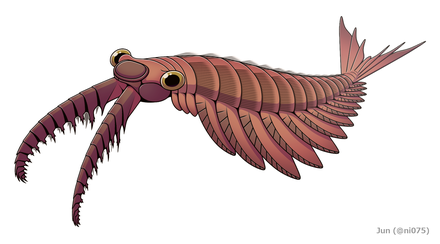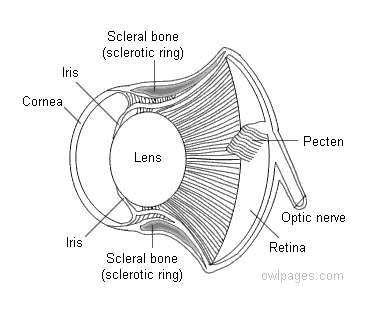Monday QOTD
I'm going to piggyback on everyone else's
@/erithakos - apparently that's a bird thing, not just a parrot thing, which makes sense based on how my chickens tongues look but is not something I'd ever though of before
@/astudyinpanda - which also means if they're raised in captivity without that particular food source, they're not poisonous anymore (though I believe it also makes them not a vibrant color anymore? would need to fact check that)
@/JoweeTheRaposa - meme time
field guide to mushroom foraging
*insert picture of mushroom* white stalk, brown top, found in the woods. best nom nom mushroom ever.
*insert literally the same picture of mushroom* white stalk, brown top, found in the woods. highly poisonous do not even look at.
Monday QOTD
I'm going to piggyback on everyone else's
@/erithakos - apparently that's a bird thing, not just a parrot thing, which makes sense based on how my chickens tongues look but is not something I'd ever though of before
@/astudyinpanda - which also means if they're raised in captivity without that particular food source, they're not poisonous anymore (though I believe it also makes them not a vibrant color anymore? would need to fact check that)
@/JoweeTheRaposa - meme time
field guide to mushroom foraging
*insert picture of mushroom* white stalk, brown top, found in the woods. best nom nom mushroom ever.
*insert literally the same picture of mushroom* white stalk, brown top, found in the woods. highly poisonous do not even look at.
[quote name="NerdMom"]
[b][u]Q.O.T.D.[/u][/b] - In honor of this shop's photos and scientific tidbits, share any scientific fact or photo - found in 5 seconds or your focus for years.
[/quote]
Those of you interested in weird, prehistoric life forms are probably familiar with [i]Anomalocaris[/i], a very weird-looking Cambrian lifeform and, I believe, our earliest evidence of predation! It's name means "abnormal shrimp," which I think is hilarious. Here's an artist depiction of what it probably looked like (taken off Wikipedia):
[img]https://upload.wikimedia.org/wikipedia/commons/thumb/5/5c/20191203_Anomalocaris_canadensis.png/440px-20191203_Anomalocaris_canadensis.png[/img]
Here's your scientific fact (more history of science, but I'm counting it): different parts of [i]Anomalocaris[/i]' body were found as fossils and classified separately, and it took almost 100 years for scientists to figure out that the five different species they had established were actually from one creature! Pretty sure they only realized this when they found a mostly complete fossil and were able to match the body parts. Goes to show that we can only know about prehistoric life what we can find properly preserved. I wonder how many creatures out there were just never in environments or situations to be properly fossilized? There's probably a ton out there still left to find :)
NerdMom wrote:
Q.O.T.D. - In honor of this shop's photos and scientific tidbits, share any scientific fact or photo - found in 5 seconds or your focus for years.
Those of you interested in weird, prehistoric life forms are probably familiar with
Anomalocaris, a very weird-looking Cambrian lifeform and, I believe, our earliest evidence of predation! It's name means "abnormal shrimp," which I think is hilarious. Here's an artist depiction of what it probably looked like (taken off Wikipedia):

Here's your scientific fact (more history of science, but I'm counting it): different parts of
Anomalocaris' body were found as fossils and classified separately, and it took almost 100 years for scientists to figure out that the five different species they had established were actually from one creature! Pretty sure they only realized this when they found a mostly complete fossil and were able to match the body parts. Goes to show that we can only know about prehistoric life what we can find properly preserved. I wonder how many creatures out there were just never in environments or situations to be properly fossilized? There's probably a ton out there still left to find :)
Monday QOTD
This one's gonna be based on cats because we recently took in a new kitten (who's laying on our arm as we type this). Decided to share some facts about their whiskers we didn't know and found in, like, five seconds. So maybe true, maybe not, we're not the greatest at research XD
They act as vision aids for your cat! Both for night vision and near vision (from what we remember, cats have poor near vision, so whiskers are probably very helpful for them).
They're also symmetrical, which we never noticed, but it's not like our cats sit still long enough for us to count.
Their whiskers are about as sensitive as your fingertips!
They're also apparently not just found on the face of a cat. Whiskers are also found by the ears and jaw and around the eyes (these ones are the 'eyebrows' cats have). We've personally only ever the main bunch of whiskers by their nose and the ones above the eyes, but some cats show whiskers by their ears and jaw a little better. They also have whiskers on their forelegs called carpal whiskers, which are important for hunting!
They also help your cat gauge spaces. Their whiskers are roughly the width of their body, and sense they're so sensitive, they can help your cat figure out if it can fit in a certain space or not. Although sometimes, it doesn't work and they get stuck.
Anyways, that's all the "interesting" stuff we found XD
Monday QOTD
This one's gonna be based on cats because we recently took in a new kitten (who's laying on our arm as we type this). Decided to share some facts about their whiskers we didn't know and found in, like, five seconds. So maybe true, maybe not, we're not the greatest at research XD
They act as vision aids for your cat! Both for night vision and near vision (from what we remember, cats have poor near vision, so whiskers are probably very helpful for them).
They're also symmetrical, which we never noticed, but it's not like our cats sit still long enough for us to count.
Their whiskers are about as sensitive as your fingertips!
They're also apparently not just found on the face of a cat. Whiskers are also found by the ears and jaw and around the eyes (these ones are the 'eyebrows' cats have). We've personally only ever the main bunch of whiskers by their nose and the ones above the eyes, but some cats show whiskers by their ears and jaw a little better. They also have whiskers on their forelegs called carpal whiskers, which are important for hunting!
They also help your cat gauge spaces. Their whiskers are roughly the width of their body, and sense they're so sensitive, they can help your cat figure out if it can fit in a certain space or not. Although sometimes, it doesn't work and they get stuck.
Anyways, that's all the "interesting" stuff we found XD
[b]Q.O.T.D. - In honor of this shop's photos and scientific tidbits, share any scientific fact or photo - found in 5 seconds or your focus for years.
[/b]
owls don't have eyeballs in the traditional sense -- their eyes are shaped more like tubes with a flared inner edge than rounded balls! in short, it has been proposed that this is due to the fact that their heads are very small so it 'saves space' and weighs less than 'traditional' eye shapes. this shape is also believed to be what gives them excellent night vision & depth perception, allowing them to be incredible nighttime hunters of smaller prey!
another slightly unsettling fact about owl eyes: in some species, you can actually see a portion of their eye inside their head if you peak in through their ears (which are hidden under feathers!) cool but strange LOL!
[img]https://www.owlpages.com/owls/articles/images/physiology_owl_eye_cross-section.gif[/img]
Q.O.T.D. - In honor of this shop's photos and scientific tidbits, share any scientific fact or photo - found in 5 seconds or your focus for years.
owls don't have eyeballs in the traditional sense -- their eyes are shaped more like tubes with a flared inner edge than rounded balls! in short, it has been proposed that this is due to the fact that their heads are very small so it 'saves space' and weighs less than 'traditional' eye shapes. this shape is also believed to be what gives them excellent night vision & depth perception, allowing them to be incredible nighttime hunters of smaller prey!
another slightly unsettling fact about owl eyes: in some species, you can actually see a portion of their eye inside their head if you peak in through their ears (which are hidden under feathers!) cool but strange LOL!

Q.O.T.D. - In honor of this shop's photos and scientific tidbits, share any scientific fact or photo - found in 5 seconds or your focus for years.
Cicadas are invertebrates that spend most of their lives underground as nymphs, feeding on tree sap. After six to 10 weeks, the nymphs hatch from eggs laid by females in tree branches. The nymphs fall to the ground and burrow underground, where they stay for two to 17 years, depending on the species. When the soil temperature a few inches below the surface reaches 64 degrees Fahrenheit, the cicadas come up from underground.
Q.O.T.D. - In honor of this shop's photos and scientific tidbits, share any scientific fact or photo - found in 5 seconds or your focus for years.
Cicadas are invertebrates that spend most of their lives underground as nymphs, feeding on tree sap. After six to 10 weeks, the nymphs hatch from eggs laid by females in tree branches. The nymphs fall to the ground and burrow underground, where they stay for two to 17 years, depending on the species. When the soil temperature a few inches below the surface reaches 64 degrees Fahrenheit, the cicadas come up from underground.
Quote:
Day 2 Question
In honor of this shop's photos and scientific tidbits, share any scientific fact or photo - found in 5 seconds or your focus for years.
I don't know why, but I've been thinking about roadrunners a lot lately. They do not make a the 'beep beep' sound like how they're portrayed in popular media. The noise they most commonly make is a deep booming noise. You can listen to some of their sound
here! I actually played these through my phone's speaker at my parents house once; there's a resident roadrunner that lives around them though he's elusive. He showed up when I played these calls! Summoning him wasn't my intent but he sure did show up fast; they're really territorial birds so I think he was looking for a rival roadrunner to shoo away.
Quote:
Day 2 Question
In honor of this shop's photos and scientific tidbits, share any scientific fact or photo - found in 5 seconds or your focus for years.
I don't know why, but I've been thinking about roadrunners a lot lately. They do not make a the 'beep beep' sound like how they're portrayed in popular media. The noise they most commonly make is a deep booming noise. You can listen to some of their sound
here! I actually played these through my phone's speaker at my parents house once; there's a resident roadrunner that lives around them though he's elusive. He showed up when I played these calls! Summoning him wasn't my intent but he sure did show up fast; they're really territorial birds so I think he was looking for a rival roadrunner to shoo away.
[quote]In honor of this shop's photos and scientific tidbits, share any scientific fact or photo - found in 5 seconds or your focus for years.[/quote]
Using this as an excuse to review some basic biopsych now that I've graduated; lets look at how a neuron fires:
When at rest, the membrane of a neuron sits at about -70mV. The voltage of the membrane is generated by differing concentrations of positive and negative ions on either side of the cell. Neurons generate an action potential (AKA they fire) when the neuronal membrane reaches a threshold membrane potential of about -50 to -55mV. At this point, the neuron goes through depolarization, where the membrane potential rapidly rises. This process triggers an action potential that travels along the axon of the neuron to the terminal, which triggers the release of neurotransmitters into the synaptic cleft. The inside of the cell becomes positive during depolarization, with the period where it is extremely positive being called overshoot, and goes through a repolarization phase after this to return the membrane to its resting potential. There is a brief state of hyperpolarization after this where the membrane potential is more negative than the resting potential, but the cell will return to the resting potential after this. During repolarization, there is a refractory period during which the neuron cannot generate another action potential.
(I 100% understand if you skip over that explanation LOL)
Quote:
In honor of this shop's photos and scientific tidbits, share any scientific fact or photo - found in 5 seconds or your focus for years.
Using this as an excuse to review some basic biopsych now that I've graduated; lets look at how a neuron fires:
When at rest, the membrane of a neuron sits at about -70mV. The voltage of the membrane is generated by differing concentrations of positive and negative ions on either side of the cell. Neurons generate an action potential (AKA they fire) when the neuronal membrane reaches a threshold membrane potential of about -50 to -55mV. At this point, the neuron goes through depolarization, where the membrane potential rapidly rises. This process triggers an action potential that travels along the axon of the neuron to the terminal, which triggers the release of neurotransmitters into the synaptic cleft. The inside of the cell becomes positive during depolarization, with the period where it is extremely positive being called overshoot, and goes through a repolarization phase after this to return the membrane to its resting potential. There is a brief state of hyperpolarization after this where the membrane potential is more negative than the resting potential, but the cell will return to the resting potential after this. During repolarization, there is a refractory period during which the neuron cannot generate another action potential.
(I 100% understand if you skip over that explanation LOL)
Q.O.T.D. - In honor of this shop's photos and scientific tidbits, share any scientific fact or photo - found in 5 seconds or your focus for years.
The platypus is venomous, can detect electric currents, glows in the dark, lays eggs, and feeds the young milk produced from the skin of the belly in a way that resembles sweating. They are also teeny tiny cute!
Q.O.T.D. - In honor of this shop's photos and scientific tidbits, share any scientific fact or photo - found in 5 seconds or your focus for years.
The platypus is venomous, can detect electric currents, glows in the dark, lays eggs, and feeds the young milk produced from the skin of the belly in a way that resembles sweating. They are also teeny tiny cute!
[quote]Monday Q.O.T.D. - In honor of this shop's photos and scientific tidbits, share any scientific fact or photo - found in 5 seconds or your focus for years.[/quote]
Opossums are North America's only native marsupial. Their body temperature is so low (~94°F or 34.4°C) that the rabies virus cannot survive in their bodies, making it extremely unlikely for an opossum to have rabies!
Quote:
Monday Q.O.T.D. - In honor of this shop's photos and scientific tidbits, share any scientific fact or photo - found in 5 seconds or your focus for years.
Opossums are North America's only native marsupial. Their body temperature is so low (~94°F or 34.4°C) that the rabies virus cannot survive in their bodies, making it extremely unlikely for an opossum to have rabies!
Monday
Q.O.T.D. - In honor of this shop's photos and scientific tidbits, share any scientific fact or photo - found in 5 seconds or your focus for years.
When moths hatch, they need to pump fluid into their wings to expand them!
Look up a luna moth hatch timelapse! It's very cool.
Monday
Q.O.T.D. - In honor of this shop's photos and scientific tidbits, share any scientific fact or photo - found in 5 seconds or your focus for years.
When moths hatch, they need to pump fluid into their wings to expand them!
Look up a luna moth hatch timelapse! It's very cool.
















































































